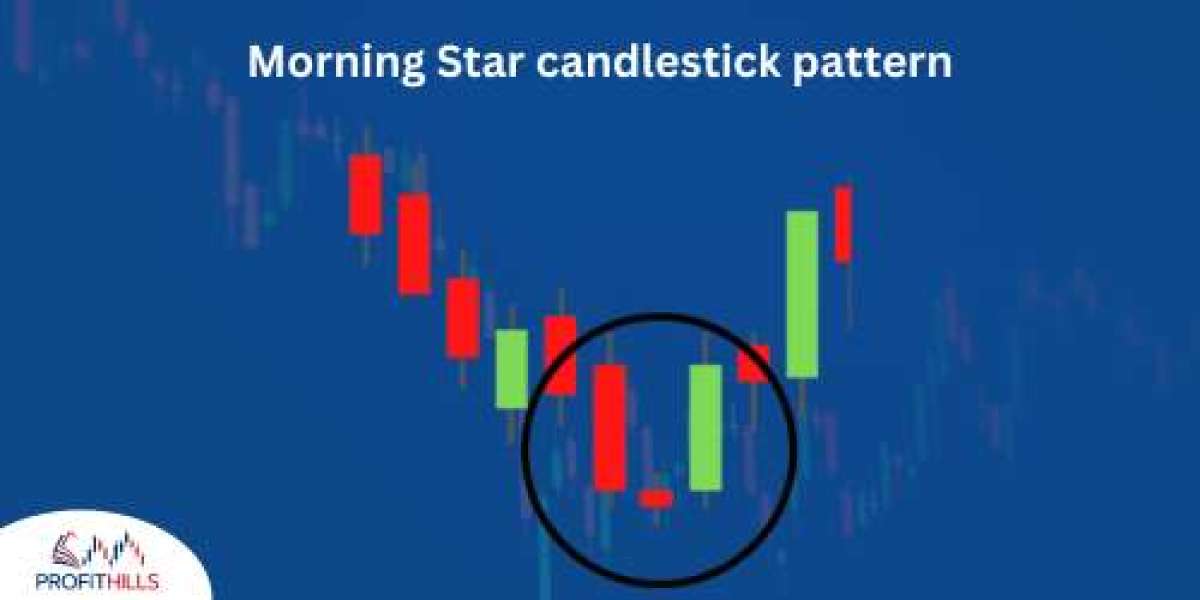The Morning Star Candlestick Pattern: A Beacon of Reversal in Trading
Technical analysts depend significantly on candlestick patterns to forecast market mood and price fluctuations. The Morning Star candlestick pattern is esteemed for its ability to signal good market reversals, distinguishing it from other patterns. This blog examines the complexities of the Morning Star pattern, including its formation, interpretation, and strategic significance.
Understanding the Morning Star Pattern
At the end of a downtrend, the three-candle Morning Star pattern often emerges, indicating a potential shift towards bullish momentum. Its name references the morning star, an emblem of the temporal transition that signifies the conclusion of darkness. This indicates that bearish momentum is waning while bullish sentiment is resurging.
Components of the Morning Star
- The First Candle: A prolonged red bearish candlestick, indicating substantial selling pressure and the probable continuation of the slide.
- The Second Candle: This little candlestick may indicate bullish or bearish mood, or it might be neutral, like a doji. As the bears' dominance in the market wanes, this candlestick signifies market hesitation.
- The Third Candle: The reversal and ownership by buyers are shown by an extended bullish (green) candlestick.
How the Pattern Forms
A Morning Star pattern requires three trading sessions to develop:
· Session 1: Prices have been significantly reduced by bears, who now dominate the market.
· Session 2: In a period of indecision, the market opens lower but exhibits little movement in either direction. A spinning top or doji are prevalent depictions of this candlestick.
- Session 3: Consequently, when bulls assert dominance, prices increase and settle around or above the midpoint of the first candle.
Key Characteristics to Confirm the Pattern
- Context: For this pattern to be seen as a credible indication to reverse direction, it must manifest at a significant support level or at the nadir of a decline.
- Gap Down and Up: The initial price of the third candle often opens higher than the second candle, whereas the second candle generally opens lower than the closing price of the first candle.
- Volume: The heightened trading volume of the third candle reinforces the reversal signal.
How to Trade the Morning Star Pattern
Step 1: Identify the Pattern
Monitor for the three-candle pattern after the conclusion of a decline. For the Morning Star pattern to be legitimate, it must satisfy the previously stated criteria.
Step 2: Confirm the Reversal
Further validation may be obtained by integrating the Morning Star pattern with supplementary technical indicators. Several prevalent instruments include:
· Moving Averages: Price movement above a pivotal moving average or a bullish crossover might validate the reversal.
· Relative Strength Index (RSI): The bullish momentum strengthens as the relative strength index (RSI) exits the oversold territory.
· Support and Resistance Levels: The pattern's validity is reinforced by its closeness to a crucial support level.
Step 3: Plan the Trade
· Entry Point: Consider entering a long position when the third candle closes above the midpoint of the first candle.
· Stop Loss: Place a stop-loss order underneath the pattern's lowest point to mitigate risk.
- Target: Profit goals may be established with a risk-to-reward ratio, Fibonacci retracements, or resistance levels.
Step 4: Monitor the Trade
Assess the present condition of the market and implement any required modifications to your strategy. External factors, such as news or macroeconomic data, may influence market behavior.
Common Pitfalls and How to Avoid Them
Misidentifying the Pattern
Verify that all conditions are satisfied to form a Morning Star design. It is possible to incur costs by responding too soon on incomplete formations.
Ignoring Confirmation
In order to validate the reversal, it is always advisable to employ additional indications or price movement signs. It could be dangerous to depend just on the pattern in isolation.
Neglecting Risk Management
Unpredictable market movements may derail even the most robust Morning Star pattern. It is critical to use stop-loss orders and appropriately size your positions.
The Morning Star in Different Market Conditions
Bullish Markets
The Morning Star pattern can be a sign that optimistic markets are about to resume their upward trajectory after a little correction. It may be used by traders to find re-entry opportunities.
Bearish Markets
Even though it happens less often, the Morning Star might show up near major support levels in negative situations. Using strong confirmation signals is crucial for validating such events.
Final Thoughts
For traders, the Morning Star candlestick pattern is a potent hint of bullish reversals when executed properly. To get the most out of it, you need to pay attention to context, confirm things, and manage risks.
Traders may improve their capacity to handle market reversals and seize new chances by including the Morning Star pattern into a comprehensive trading plan. Mastery in its use requires practice and expertise, as is the case with other tools used for technical analysis. Best of luck with your trades!








